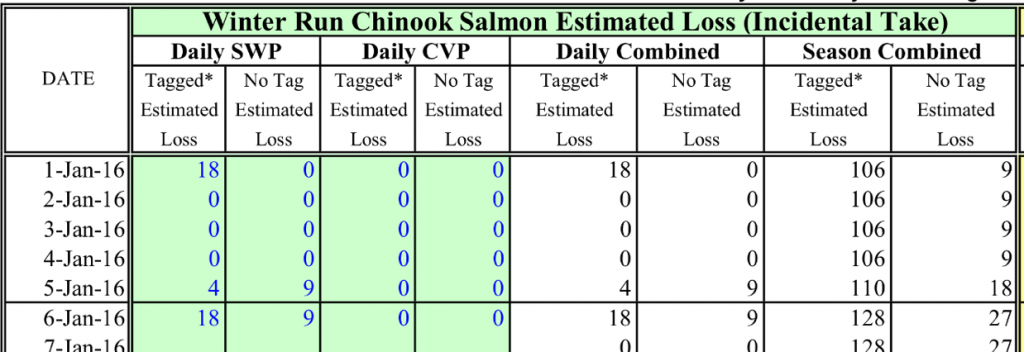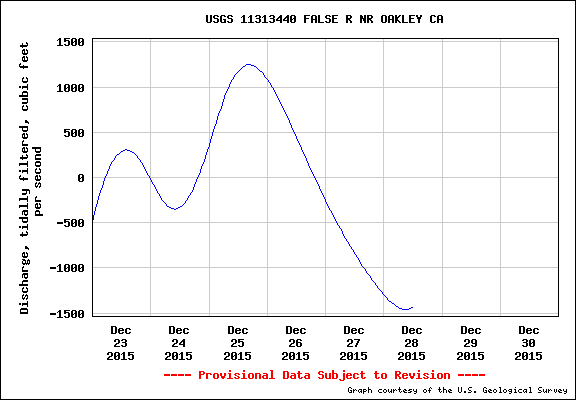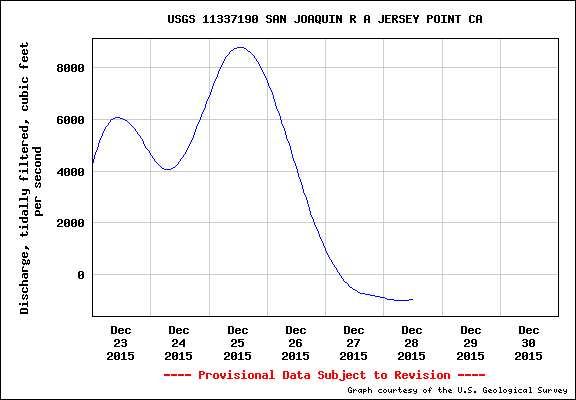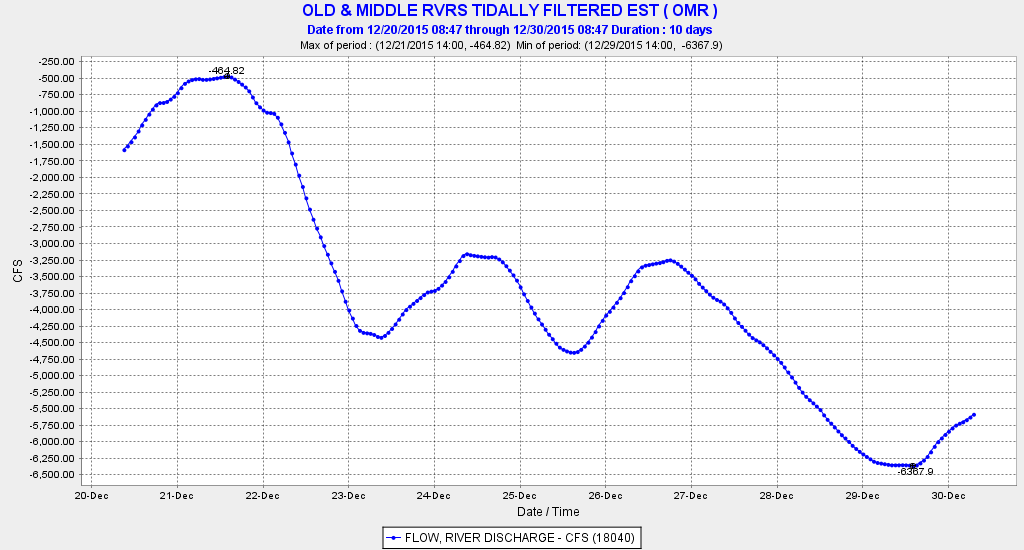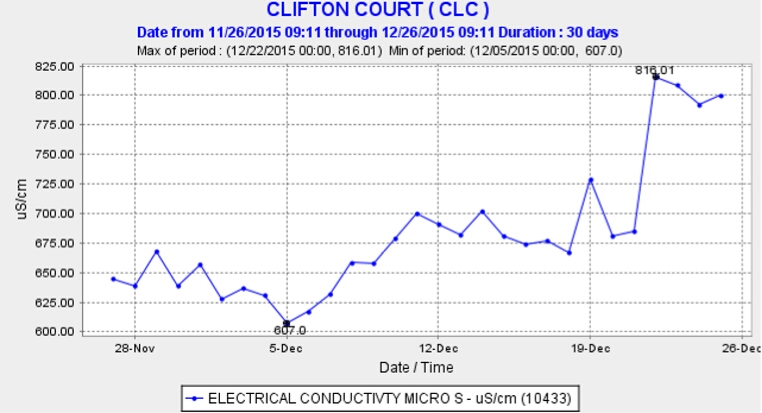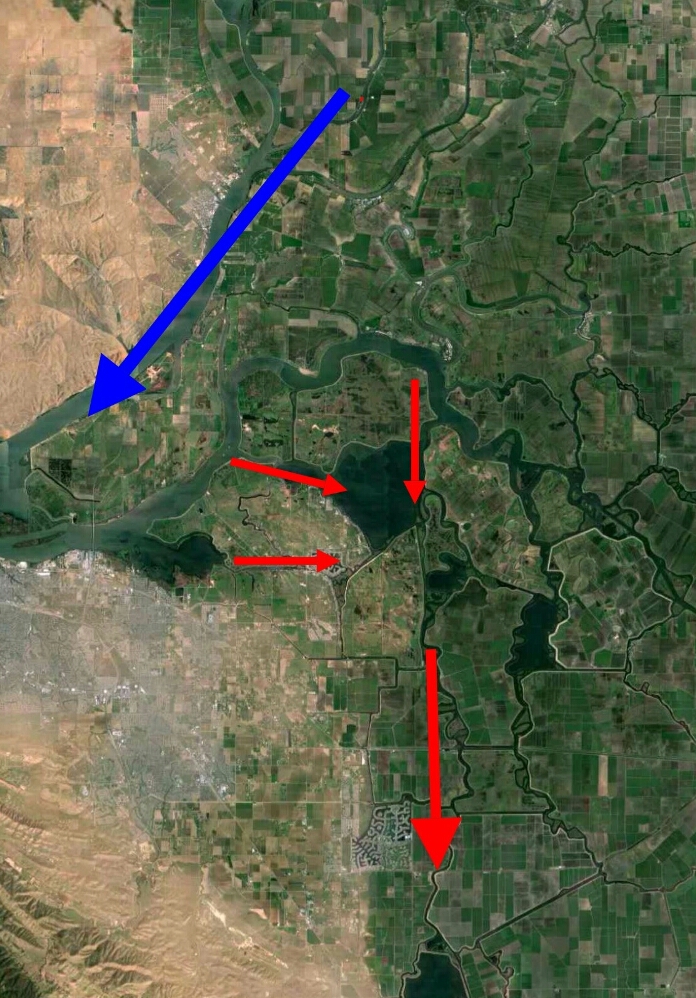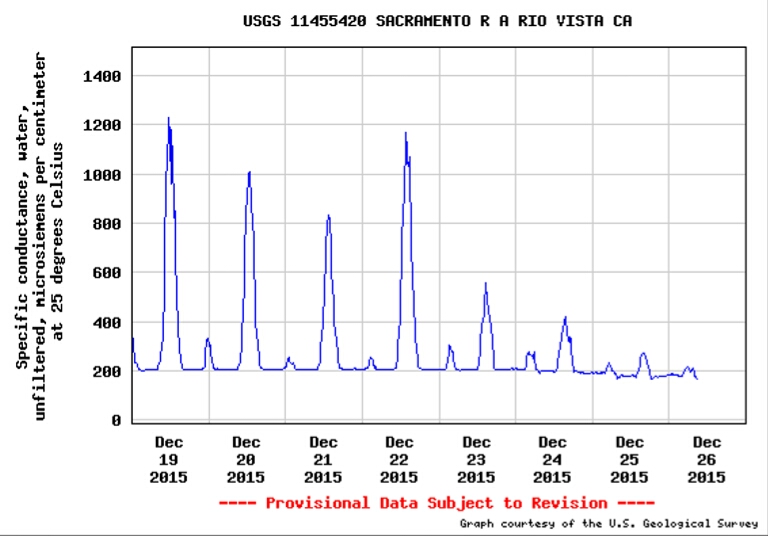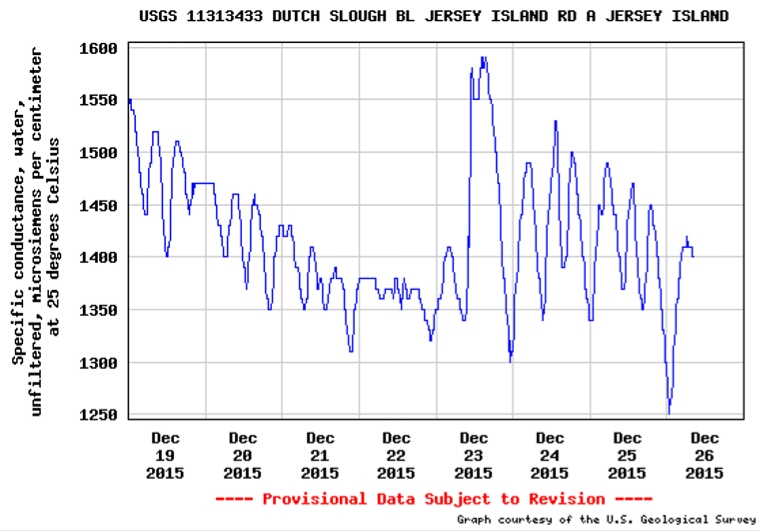The Fremont Weir fish passage improvements at the upper end of the Yolo Bypass (see previous posts for details) are mandated in the National Marine Fisheries Service’s Central Valley Project and State Water Project joint biological opinion (2009 OCAP BO). The OCAP BO that allows limited take of endangered salmon, steelhead, and sturgeon for the wide array of water projects’ features (i.e. dams and water diversions), provided various improvements are made.
So far, as of the beginning of 2016 there have been no improvements or fixes at Fremont Weir, just more planning and discussion. Meanwhile, CDFW rescued hundreds of stranded salmon in the upper Bypass this fall. There has been no rescue of sturgeon since the Fremont Weir and Tisdale Weir rescue efforts in April 2011, when 24 endangered Green Sturgeon were rescued and radio tagged (21 eventually returned to the Pacific Ocean after migrating to spawning grounds in the upper Sacramento River). Because of the drought, there have been no river flood flows over Fremont Weir into the Bypass since the April 2011 event. (Overflow of the Tisdale Weir into the Sutter Bypass did occur in Dec 2012 and Jan 2013.). However, salmon and sturgeon continue to be attracted to the Bypass by flows from local sources and to become stranded at the upper end of the Bypass.
“Fixes” under consideration for Fremont Weir include changes that would allow the Sacramento River to flood parts of the bypass at lower flows. The amount of water that might be diverted to the Yolo Bypass from the Sacramento River through prospective changes to the weir ranges from several hundred cfs to 6000 cfs. The larger end of the range of flows would be designed to provide for Bypass rearing of young salmon that would pass along with the water from the river to the Bypass. There is little doubt that young salmon do well in the over 40 miles of floodway habitats of the Bypass. The Delta also benefits from flow through the Bypass because of enhanced biological productivity.
It will take years to plan and implement such large sized enhancements in the Bypass. But an immediate solution to the adult salmon and sturgeon passage problem at Fremont Weir is not that complicated or contingent on other actions. OCAP BO Action 1.7– a Fremont Weir Ladder Project (reproduced below, with a deadline that is 5 years past) – should be implemented now
OCAP
Action I.7. Reduce Migratory Delays and Loss of Salmon, Steelhead, and Sturgeon at Fremont Weir and Other Structures in the Yolo Bypass
Objective: Reduce migratory delays and loss of adult and juvenile winter-run, spring-run, CV steelhead and Southern DPS of green sturgeon at Fremont Weir and other structures in the Yolo Bypass.
Description of Action: By December 31, 2011, as part of the plan described in Action I.6.1, Reclamation and/or DWR shall submit a plan to NMFS to provide for high quality, reliable migratory passage for Sacramento Basin adult and juvenile anadromous fishes through the Yolo Bypass. By June 30, 2012, Reclamation and/or DWR shall obtain NMFS concurrence and, to the maximum extent of their authorities, and in cooperation with other agencies and funding sources, begin implementation of the plan, including any physical modifications. By September 30, 2009, Reclamation shall request in writing that the Corps take necessary steps to alter Fremont Weir and/or any other facilities or operations requirements of the Sacramento River Flood Control Project or Yolo Bypass facility in order to provide fish passage and shall offer to enter into a Memorandum of Understanding, interagency agreement, or other similar mechanism, to provide technical assistance and funding for the necessary work. By June 30, 2010, Reclamation shall provide a written report to NMFS on the status of its efforts to complete this action, in cooperation with the Corps, including milestones and timelines to complete passage improvements.
Rationale: The Yolo Bypass and Fremont Weir has been a documented source of migratory delay to, and loss of, adult winter-run, spring-run, CV steelhead and Southern DPS of green sturgeon. The existing fish passage structure is inadequate to allow normal passage at most operational levels of the Sacramento River. The project agencies must work with the Corps, which owns and operates Fremont Weir, to achieve improvements for fish. Other structures within the Yolo Bypass, such as the toe drain, Lisbon Weir, and irrigation dams in the northern end of the Tule Canal, also can impede migration of adult anadromous fish.
Additionally, stranding of juvenile salmonids and sturgeon has been reported in the Yolo Bypass in scoured areas behind the weir and in other areas. This action offsets unavoidable project effects on adult migration and minimizes the direct losses from flood management activities associated with operations.
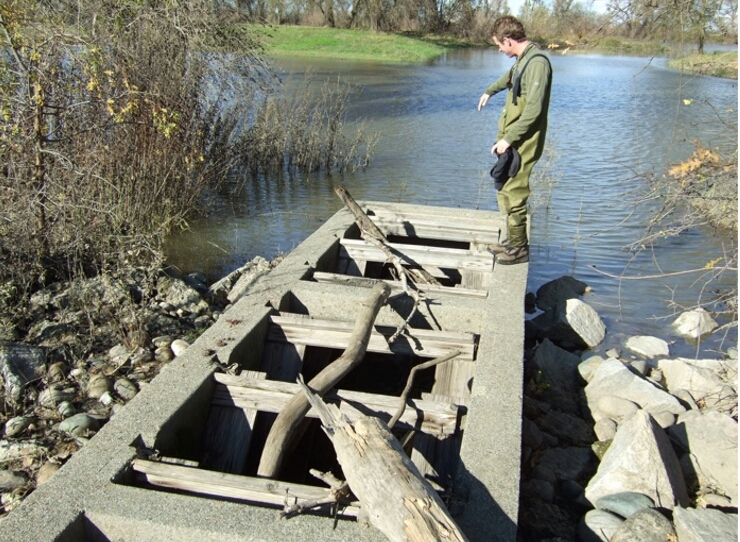
Fremont Weir Fish Ladder (Looking North towards flooded Sacramento River)
Fremont Weir Ladder Project
Fremont Weir Fish Ladder Replacement. “The existing Fremont Weir Denil fish ladder will be removed and replaced with new salmonid passage facilities designed to allow for the effective passage of adult salmonids and sturgeon from the Yolo Bypass past the Fremont Weir and into the Sacramento River when the river overtops the weir. Specific design criteria of the ladder have not yet been determined. This facility will incorporate monitoring technologies to allow for collection of information to evaluate its efficacy at passing adult fishes.” From Draft BDCP CM 2 Yolo Bypass Fishery Enhancement, October 5, 2010.
The 2010 proposal cited above would have been insufficient, because any prospective fish passage improvement would have been limited to conditions when the weir would overtop (river elevation 33.5’). Present planning efforts are looking at options that provide flows and passage at river elevations from 14’ to 22’. The deeper the project goes, the more often passage can be provided. Elevation 14’ is likely the limit: otherwise water could flow in reverse (from the Bypass through the weir to the river). A 14’ elevation would allow passage in most dry years when such action is most needed. But even in a wet year overflow like 2011, a 14’ elevation would relieve Bypass stranding potential by increasing the passage window by 20%, and by offering better through-opening conditions for passage.
Options:
- Dig and line channel to river from existing 30-ft ele down to 14/15-ft ele.
- Rebuild existing 4-ft-wide, 4-ft-deep ladder from existing 33-ft top ele and 28-30 ft ele bottom, to 8-20 ft wide, 8-15 ft deep slot or open box-culvert weir.
- Dig and line 10-ft-wide channel from weir apron down into Bypass to large pond about 50 yards distance. Bottom of channel should be about 14-ft ele through weir apron (it is presently at 28-ft ele). Bypass pond and Tule Canal downstream of weir (top center in photo below) is about 15-20-ft surface ele, thus channel to pond may have to incorporate step-pools. Channel enhancements may also be required between pond and Tule Canal.
- The pond should be filled so fish do not become stranded
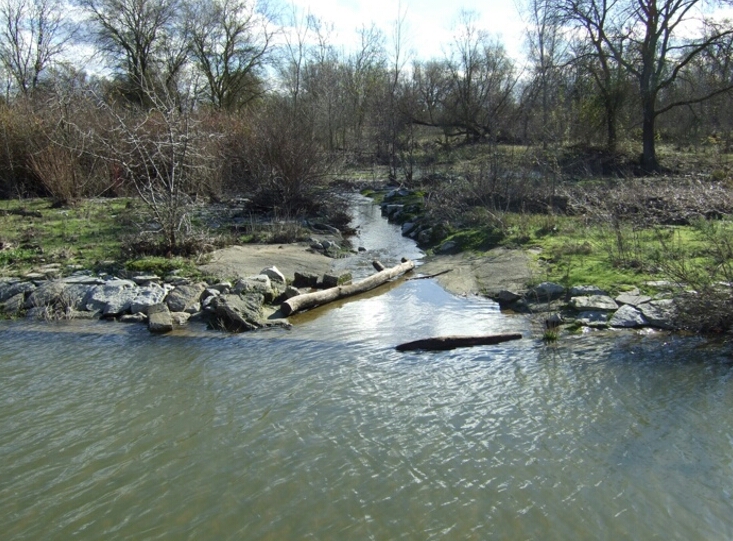
Photo above looking South from top of weir toward target pond
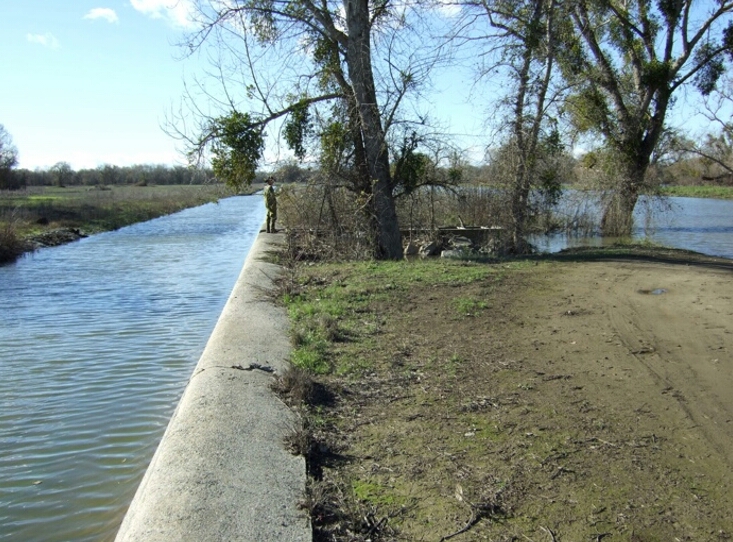
Ladder in center of photo. Bypass and apron to the left; River to the right (100 Yds).



